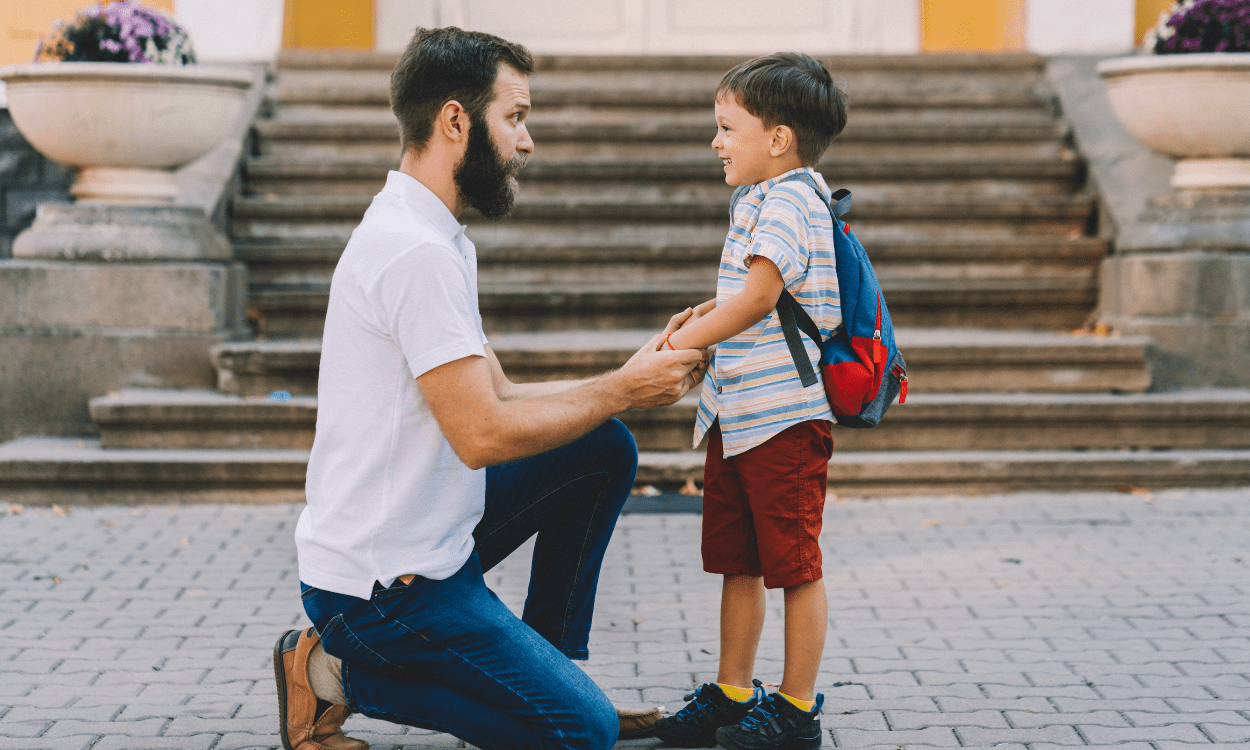Children are some of the most curious people in the world. With your help, any moment can become a learning opportunity! Today, we’re going to explore some of the most common ways that you can create learning moments with your child outside of the classroom.
Organic vs. structured learning opportunities
The two main ways we can conceptualize potential learning opportunities with your child are organic and structured moments. These terms refer to how the learning opportunities come to happen.
Organic moments are everyday situations that your child naturally engages with, while structured moments are situations that you plan. Let’s take a look at three different topics that you could cover with your child in either an organic or structured method.
Safety
Safety is a huge part of teaching your child to be autonomous, but it’s a tricky line to walk. You don’t want to allow your child to hurt themselves, but you also want them to learn how to keep themselves safe.
Organic safety moments can occur anywhere, but let’s take the dinner table as an example. Your child is trying to climb into their booster seat, but they’re struggling because it’s too tall. Of course, it’s a natural parental reaction to see this and say, “Let me help you,” and put them in their seat, but your child won’t learn anything if you simply do it for them.
Instead, offer them caution. “Be careful, you could slip.” You can position yourself so that you’re ready to help them if they fall, but what’s important is you let them try first. Autonomy is always the end goal.
The kitchen, meanwhile, is a fantastic place for structured safety moments. If you’re cooking something on the stove, you can bring your child over to it and talk about what you’re doing. “This is the stove. Mommy uses this to make food, but it can hurt you if you’re not careful.” It’s a quick, useful lesson that engages your child in an everyday activity.
Something worth mentioning here: structured moments don’t have to be formal sit-downs. You can take a minute out of your routine to explain what you’re doing to them and go right back to it. This is also great for keeping a dialogue going with your child, which can comfort them and prompt them to share their thoughts as well.
Cleanliness and responsibility
In the Montessori sense, cleanliness and responsibility are closely related. Cleanliness in this case refers to keeping the child’s space clean. This could include putting their toys away or cleaning up after they’re done eating.
And speaking of eating, a great organic cleanliness and responsibility moment could occur when your child is eating their snack. If, for example, they’re eating raisins and they drop some, your first instinct will likely be to clean up after them because it’s faster and easier. But again, this could be a valuable learning moment!
Instead, you can direct their attention to the mess and say, “You dropped some. Let’s clean those up later, okay?” You don’t have to interrupt their meal, but after they’re done, remind them of the mess again and ask them to clean it up. This helps them understand that their own messes are their responsibility and that they need to care for their own environment. Simply cleaning up after them could reinforce the idea that cleaning up isn’t their responsibility.
A structured cleanliness activity could include vacuuming. Your child probably sees you vacuum all the time, but you can introduce them to the chore by giving them a small dust buster and asking them to help you. They can learn by modeling your behavior.
It might take some time, but eventually, your child can start contributing to a cleaner home. Then when you’re both done, you can celebrate with positive reinforcement and attention. “Isn’t it nice when the house is clean?” You can nurture their feeling of pride for accomplishing something. This can help them develop a relationship between good feelings and a clean space.
Naturalistic observation
Naturalistic observation can refer to surveying your environment whether you’re in a rural or urban setting.
You can encourage their natural curiosity by creating organic learning moments based on their interests. Someone in a rural setting could take their child down to the creek. If your child is really interested in fish, you could talk about that interest with them. Maybe you could even do a little research yourself, and you could both learn something! Meanwhile, if you live in a city, you could take your child to the supermarket and show them where mommy and daddy buy food.
You don’t need to force their attention onto one subject or another. You can channel their natural curiosity to engage them. Pay attention to what they’re interested in and build on it. If your child is telling you that they’re interested in something in their environment, you’d be amazed at what they retain.
You could even build structured activities around their interests. If they really love the story “Goodnight Gorilla,” for example, you can plan a trip to the zoo so they can see a gorilla in real life. This little act of recognizing what your child likes can mean a lot to them, and it could even help to shape their interests and passions for the rest of their life.
Learning moments are special moments
No matter how they happen, learning moments can help you and your child become closer as they begin to understand more about their world. As they get older and start pursuing those interests more, it’s more likely they’ll want to share those hobbies with you if you’ve already shown interest in them. Together, you can create a dynamic where you’re a constant part of their lifelong learning.

